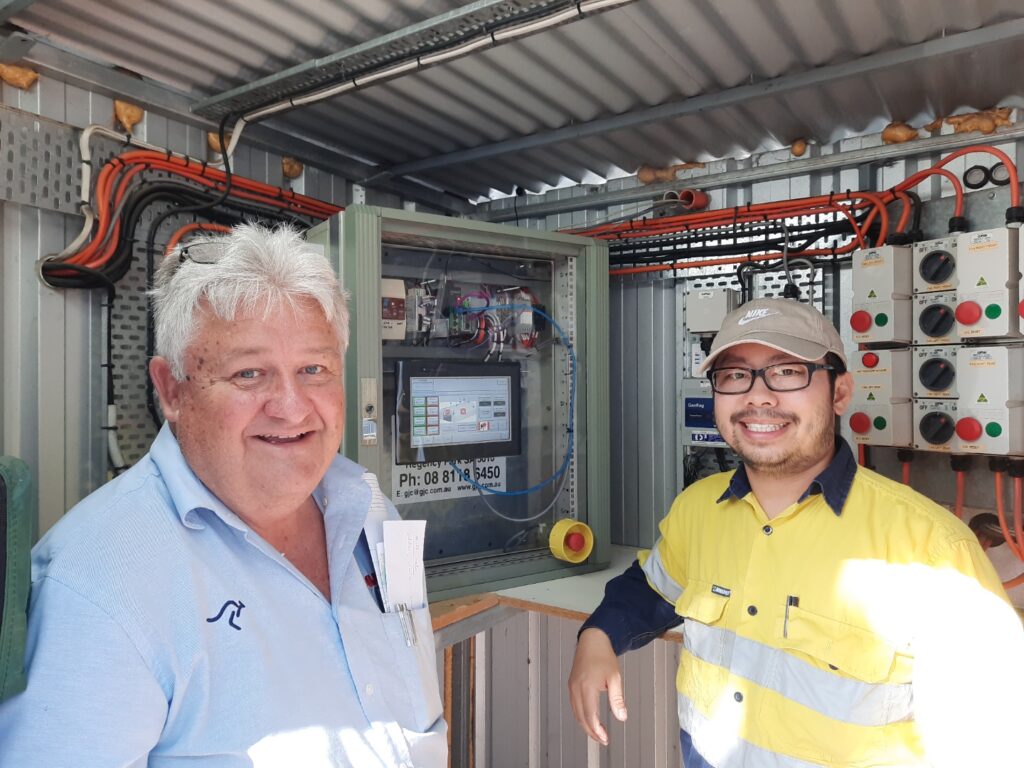The Naracoorte Heat Shed has had some important upgrades, which have improved the reliability and functionality of the facility for customers and Heat Shed Manager, Sarah Bird.
The biggest change is upgraded control system software, which means the shed is now operated by a touch screen, with inbuilt customer messaging.
Sarah said the new touch screen system was a big improvement for regular heat shed customers. “The original system was put in 20-odd years ago and it hasn’t been upgraded over that time. It was very slow and cumbersome,” she said.
“Now, with the touch screen and new software, the system is very quick and easy to operate. You literally just press a button and it heats up immediately.”
The system also includes a messaging service – an SMS or email to the customer confirming that the heat treatment has been completed, the details of the equipment that’s been sterilised, the temperature and the time.
“This immediate delivery of results to clients is powerful. They need this for their own record keeping. And it means we don’t have to worry about paperwork and printers. It’s now a very efficient system,” Sarah said.
“Say, for example, the customer is a contractor with a harvester. They need to prove to their client that the harvester has been correctly heat treated before it enters the vineyard. Now the contactor can show the vineyard owner the message on their phone, and everyone is happy.
“And if there is a fault with the system, for example, a power surge, which hopefully we don’t have, it will also send me a text message telling me what’s happened. The messaging service means the customer and I don’t need to be on-site the whole time waiting for the job to finish.”
Another improvement will be the installation of four replacement temperature probes this month. Four probes are needed to check that the correct temperature is being achieved for sterilisation.
“We put two mobile probes deep within the machinery or equipment and then there are two fixed probes attached to the walls of the heat shed – one positioned low and one high. Continuous temperature logging of all four probes ensures the entire shed and machinery or equipment reach and maintain the right temperature,” Sarah said.
Sarah has been the Heat Shed Manager for seven years and her role includes both operating the heat shed and educating customers about best practice hygiene for machinery.
“The biosecurity legislation between states is quite complex. I get phone calls from people wanting to bring machinery over from interstate and use the shed when they arrive. If they’re coming out of an interstate Phylloxera Infested or Risk Zone, heat treatment must be completed prior to the machinery leaving either of those zones,” Sarah said.
“There are also truck drivers, for example, who aren’t necessarily aware of the legislation for transporting harvest machinery and grape machinery into different states. I give them an overview of their legal obligations and point them in the right direction for detailed instructions, through state biosecurity departments including PIRSA.”
Sarah said vintage was the busiest time of year for the heat shed, with customers arriving at all times of the day and night. “The weeks after vintage are also busy, when people are shifting equipment back to regions that they’ve come from,” she said.
“Basically, people ring up and I book them in and then I’ll meet them at the shed at the specified time and make sure that the machinery/equipment complies with our requirements, because we can only put diesel machinery through and also need to ensure all surfaces are clean of soil and plant material to ensure maximum effectiveness of the heat treatment.
“It’s good to get a bit of notice with heat shed bookings – it’s a busy time of year – but if someone needs to go through relatively urgently, we work around that. It’s just how vintage works.
“If we have different customers coming through on the same day, we try and piggyback them so that the heat shed is still warm when we put the next piece of machinery in, which saves time.”
The main heat shed customers are vineyard owners and contractors. “And sometimes we have people who want to make a bit of wine themselves. They might bring in some bins and heat treat them before they go onto a grower’s vineyard where they’re purchasing grapes from,” Sarah said.
“We also get phone calls from the drilling operators. While the heat shed was built for sterilisation for phylloxera, other industries are using the resource for best practice cleaning and hygiene.”
The heat shed was the first purpose-built facility in South Australia for treating vineyard machinery to ensure that it is free from phylloxera. However, being on the SA-side of the border its location is not suitable for treatment of incoming machinery of equipment from interstate that requires mandatory heat treatment for entry into the state. Rather, greatest use of the shed comes for treating items destined for SA intra-regional movement.
Click here for more information about the Naracoorte Heat Shed including fees and how to book it.
Note: Vinehealth is no longer running an Accredited User scheme for the Heat Shed. All treatments are only to be undertaken by the Heat Shed Manager.
